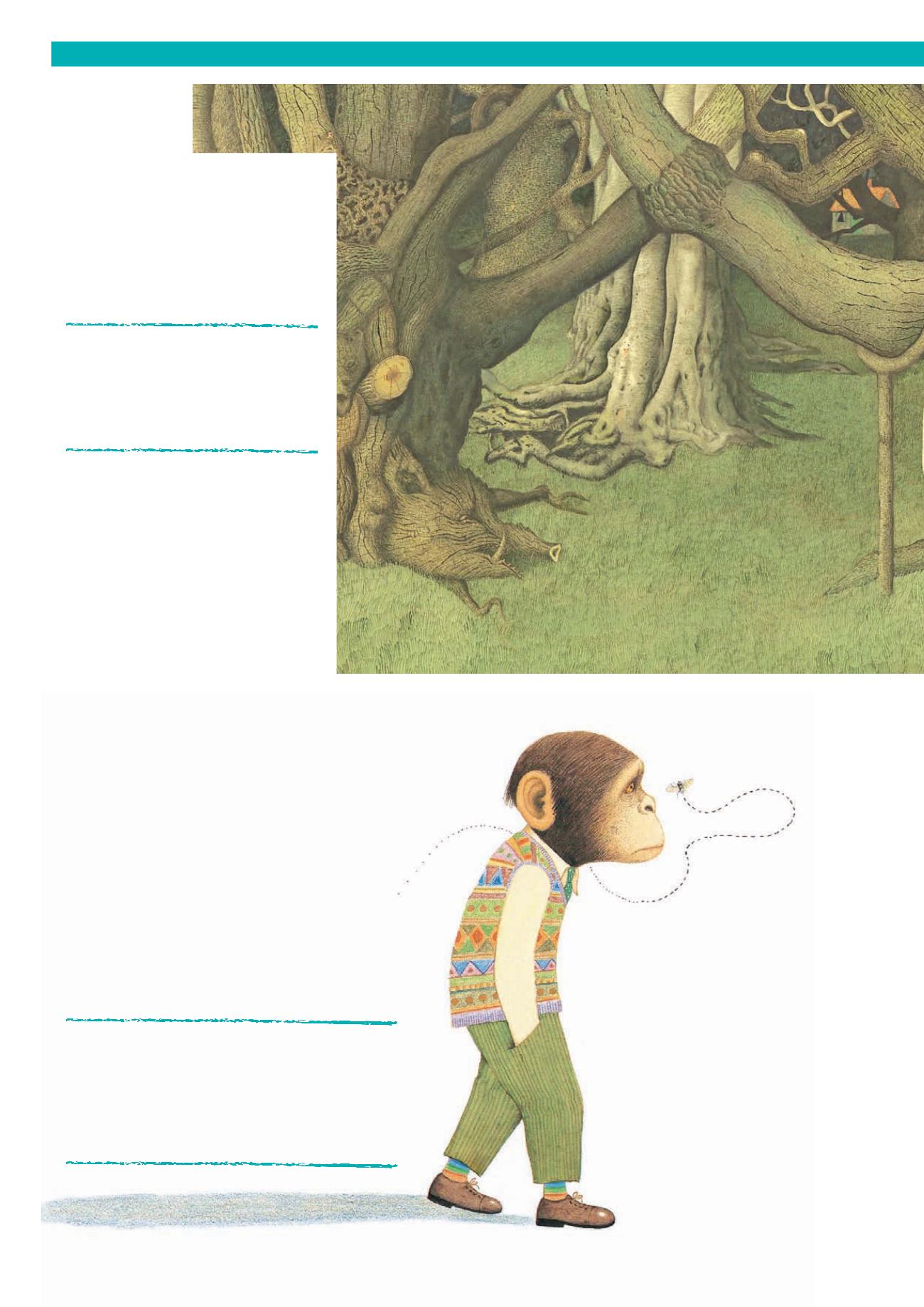
56
TEACH READING & WRITING
Illustrations: Copyright © 1989 Anthony Browne. FromTHE TUNNEL by Anthony Browne. Reproduced by permission of Walker Books Ltd
“IsWillya
real person?”
It’s a tribute toBrowne’s art that a childwas
able to ask himthis question about
Willy the
Wimp
–who is, of course, a chimpanzee!
Browne is known for his animal
protagonists. “The apes I write about are
people in all but appearance,” he says.
Choose an animal. What characteristics
does it possess?What skills, andwhat
abilities? This animal is going to inspire the
creation of a newpicturebook character –
a human! Which of your animal’s attributes
will you include?
Create a quizwith questions such as
‘What’s your favourite food?’ and ‘What are
you frightened of?’ to help youfind outmore
about your character before drawing it.
Will it end up looking like a person, or
the animal that inspired it?
that theymight) and the visitors in
Zoo
aren’t
animals. They just behave like them.
In fact, Browne doesn’t go in for what he
calls a ‘departure fromreality’. His books
often begin and endwith domestic events,
and the surrealist details are there to draw
our attention to the psychological landscape
of the story.
EXPLORE THE SURREAL IN...
The Tunnel; Into the Forest; Changes; Alice’s
Adventures inWonderland; Hansel andGretel;
Gorilla; Zoo; Piggybook; Little Beauty; King
Kong; Voices in the Park
Transformyour view
Aswell as including hidden clues in his books,
Browne also enjoys transforming objects.
What is it, for instance, about the objects in
Changes
that suggest their ‘alter egos’?
Make a ‘thought collection’ of
transformable objects. Create before and
after pictures to show the transformations
in action: a table could turn into a horse,
for example, or a saucepan could become
a fancy hat.
Gather some ordinary household objects
together. Choose two, then combine them
to produce something new. Think about the
appearance, composition and characteristics
of each object before creating your hybrid.
We don’t always need towitness a
transformation to believe in it. People are
good at seeingwhat theywant to see (and
giving objects a status or characteristics
that they don’t possess – something that’s
used by advertisers theworld over).
Choose an object and transform it solely
by the power of speech. Visualise your
transformation, then tell everyonewhat
your object has become – a length of
hosepipe could become an exotic fortune-
telling snake, for example, and a crumpled
SHAKE UP YOUR SUBCONSCIOUS
Another way to explore surrealist ideas is by playing the Shape
Game. Browne uses this techniquewhen hewants to generate
ideas. Drawan outline, then invite someone to transformthe
shape into an object. This game is explored in
The ShapeGame
,
inwhich the family from
Zoo
visit an art gallery.
newspaper a treasuremap.
Transformyour object by the
power of speech alone,
encouragingwild claims and
vivid language as you sell
your wares. When you’ve
finished, examine some
commercial adverts and
work out what you’re
being invited to
believe. Why do
some things cost
more than others
that look very
much the same?


